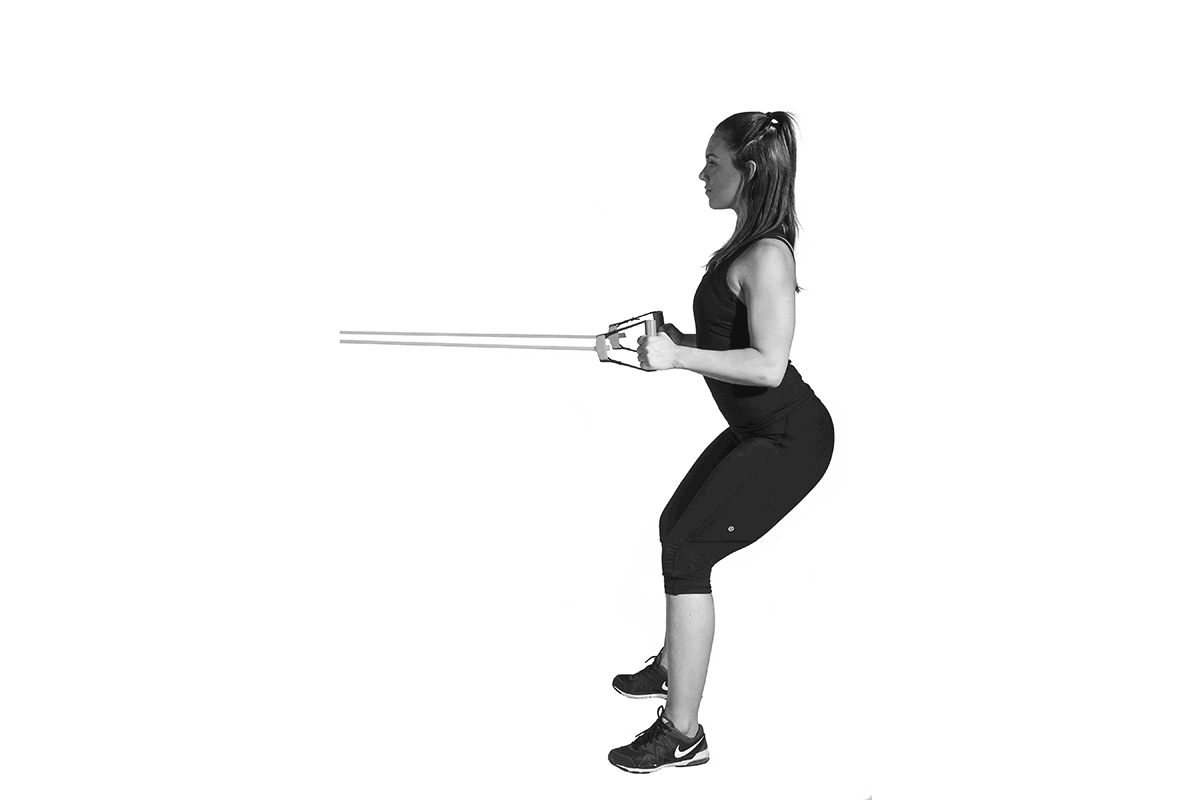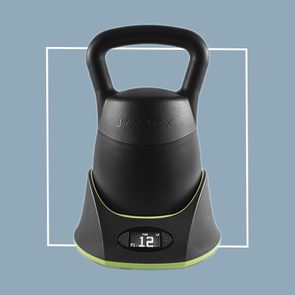A Trainer Designed This Simple Resistance Band Leg Workout to Give You “Killer” Results
Updated: Jul. 06, 2022
Don't think a resistance band is enough to get you the lower-body results you're after? Whether you're looking to build muscle or want some moves to manage knee pain, consider these five banded leg exercises you can do anywhere, anytime. You just might thank us.
When you hear the phrase “killer leg workout,” you might envision heavy steel plates and bodybuilders doing several-hundred-pound squats. But during the pandemic, I learned that for years I’d been missing out on resistance bands for equally amazing leg workouts.
Doing heavy lifts in a gym is certainly a great way to strengthen and build muscle in your legs—as a trainer and athlete, that’s how I’d operated for years. Then the pandemic hit, which forced me to adapt and get creative. So I purchased exercise equipment for my at-home workouts and altered my routine to maintain my fitness at home.
At first, I was skeptical of the idea that resistance bands could deliver high-quality leg workouts, but as Len Glassman, CPT, CHN—a health and fitness professional and author of Soul Trainer—tells The Healthy, a resistance band is “ideal for leg training and toning since it offers ‘negative and positive’ resistance, meaning it works muscles on the eccentric and concentric movements (i.e., forward and backward movements).”
With further research, I’ve found some distinct lower-body advantages to using this tool. As one example, resistance band training can be particularly helpful for people with joint pain (which, as a marathon runner, I’ve definitely encountered from time to time). A 2020 study in the Journal of Physical Therapy Science also found that exercise using resistance bands was an effective treatment for patients who had degenerative knee arthritis.
Additionally, resistance bands can assist people who experience knee pain when they squat—which, if you’ve ever felt this pain, you’ve realized is a very regular daily movement. The benefit occurs because the elasticity of resistance bands provides a wider range of motion throughout exercises, resulting in less wear and tear on joints than other exercises that put significant load on the knees, like barbell back squats.
Resistance bands are also extremely versatile, convenient, affordable, and equivalent to weight training for building muscle and toning legs. Jennifer Fidder, CPT, a certified personal trainer and coach, says, “You can do squats, lunges, deadlifts, or even add some small loop bands to your routine to strengthen your glutes, abductors, as well as many of the smaller muscles in your body.”
So even when your gym is closed, you can breathe new life into your at-home workouts. Before you jump in, check out the resistance band set I use at home.
Overhead Squat – 4 sets x 15 reps
Muscle Activation: Glutes, quads, hip flexors
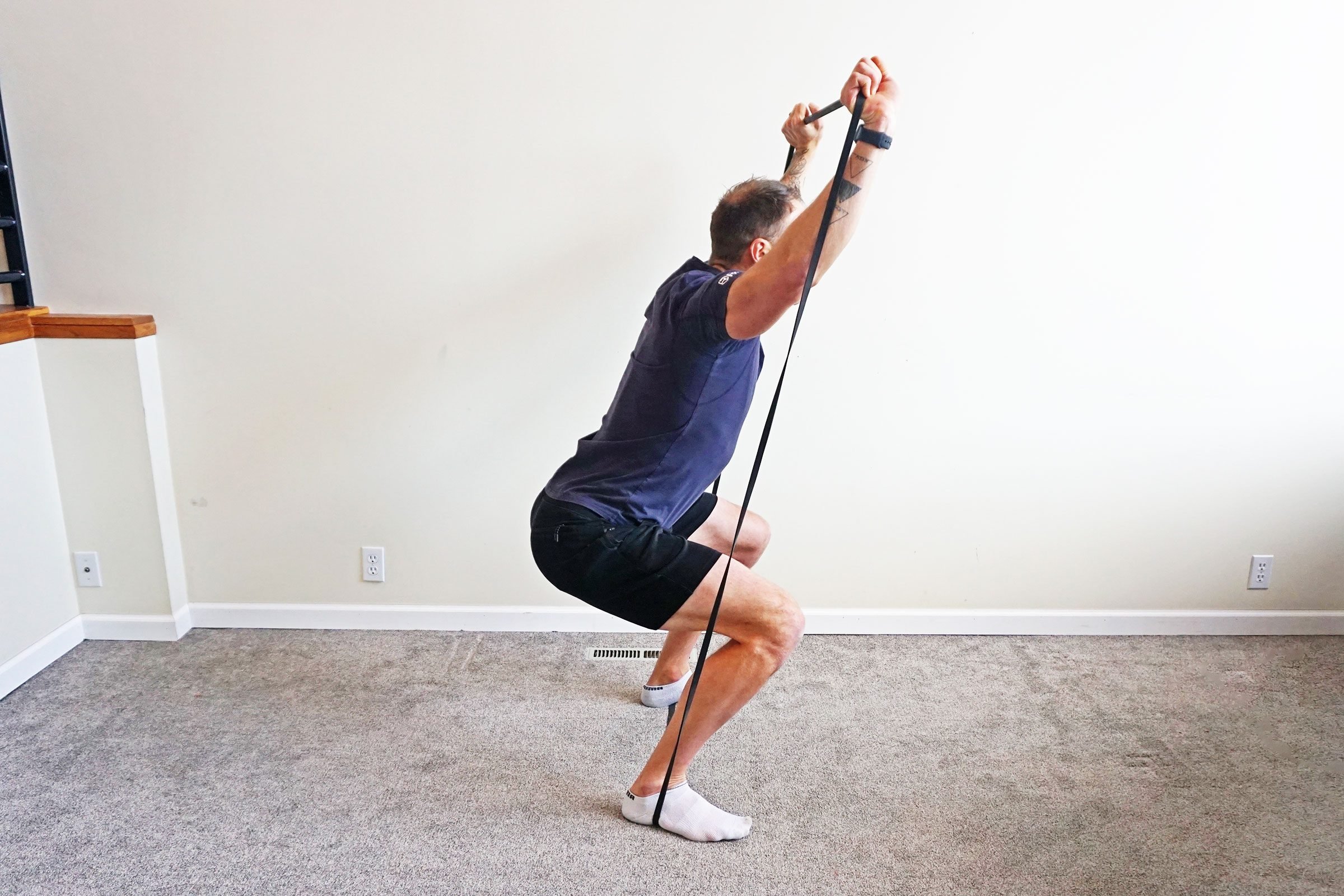
Pressing the band overhead in this move delivers a few added benefits, starting with the fact that it promotes good form and prevents you from leaning forward. This forces you to stand on your heels and drop your butt down. (Just like with traditional barbell squats, form is king—here’s how to correctly do a squat.)
Place both feet on the resistance band, then push the band over your head using both arms.
Two tips: grab the band in a spot that will create enough resistance to activate your glutes and quads. Adopt a wider stance for added resistance.
Split Squats – 4 sets x 10 reps per leg
Muscle Activation: Glutes, hamstrings, quads
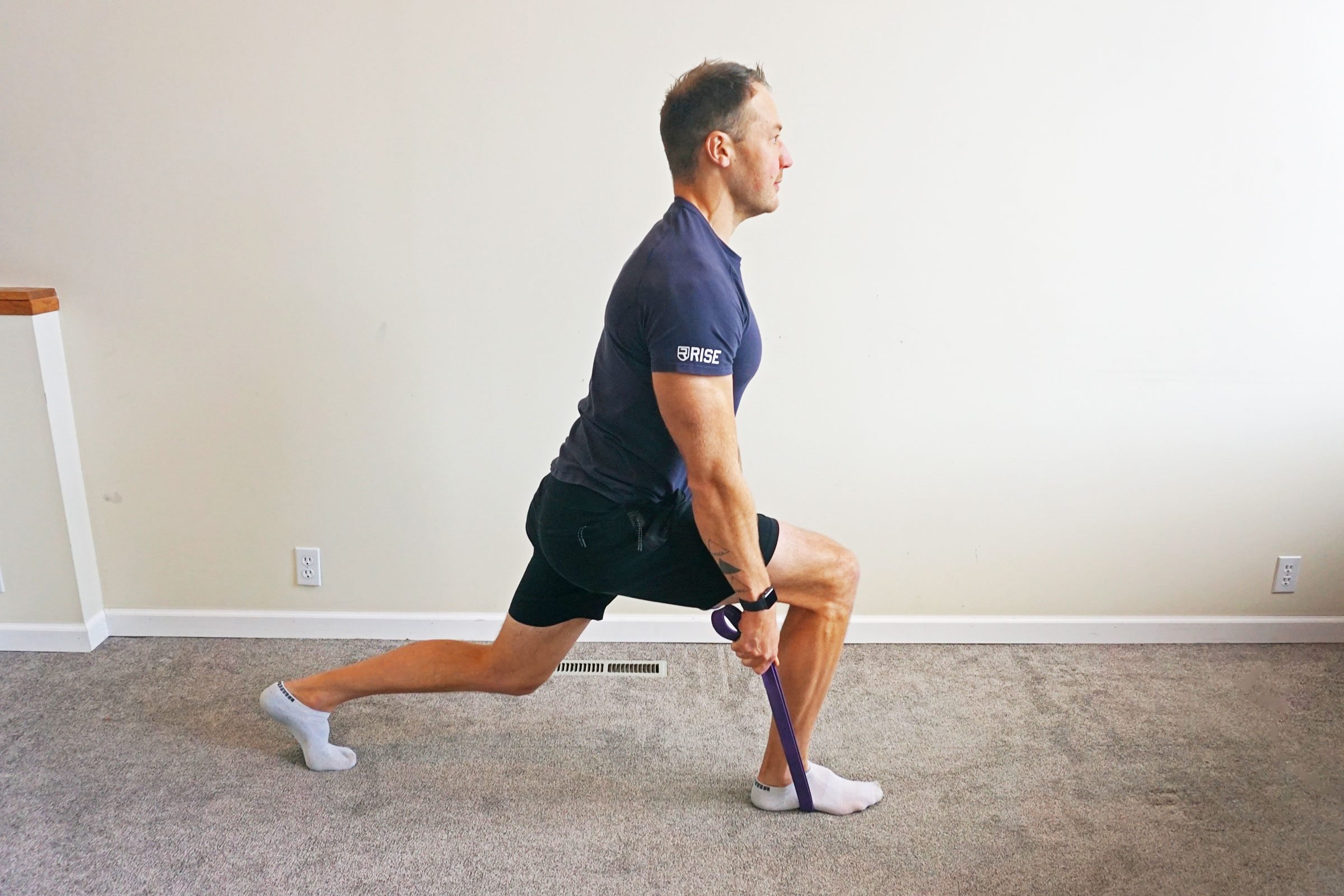
When I first tried this exercise, I was shocked by how well it worked my glutes. Also, no matter your fitness level, this is an extremely effective exercise for leg strengthening and toning.
Step on two sides of the resistance band and bend one leg down into a lunge position. To maintain proper form, don’t let your knee extend beyond your toes. Grab the band where it will provide strong resistance, then pull it up and back at a roughly 45-degree angle to work your glutes and hamstrings.
Alternately, try an angle variation by pushing straight up to activate your quad muscles.
If you love what this move does, here are more great butt workouts.
Traditional Deadlift – 4 sets x 12 reps
Muscle Activation: Hamstring, glutes, lower back
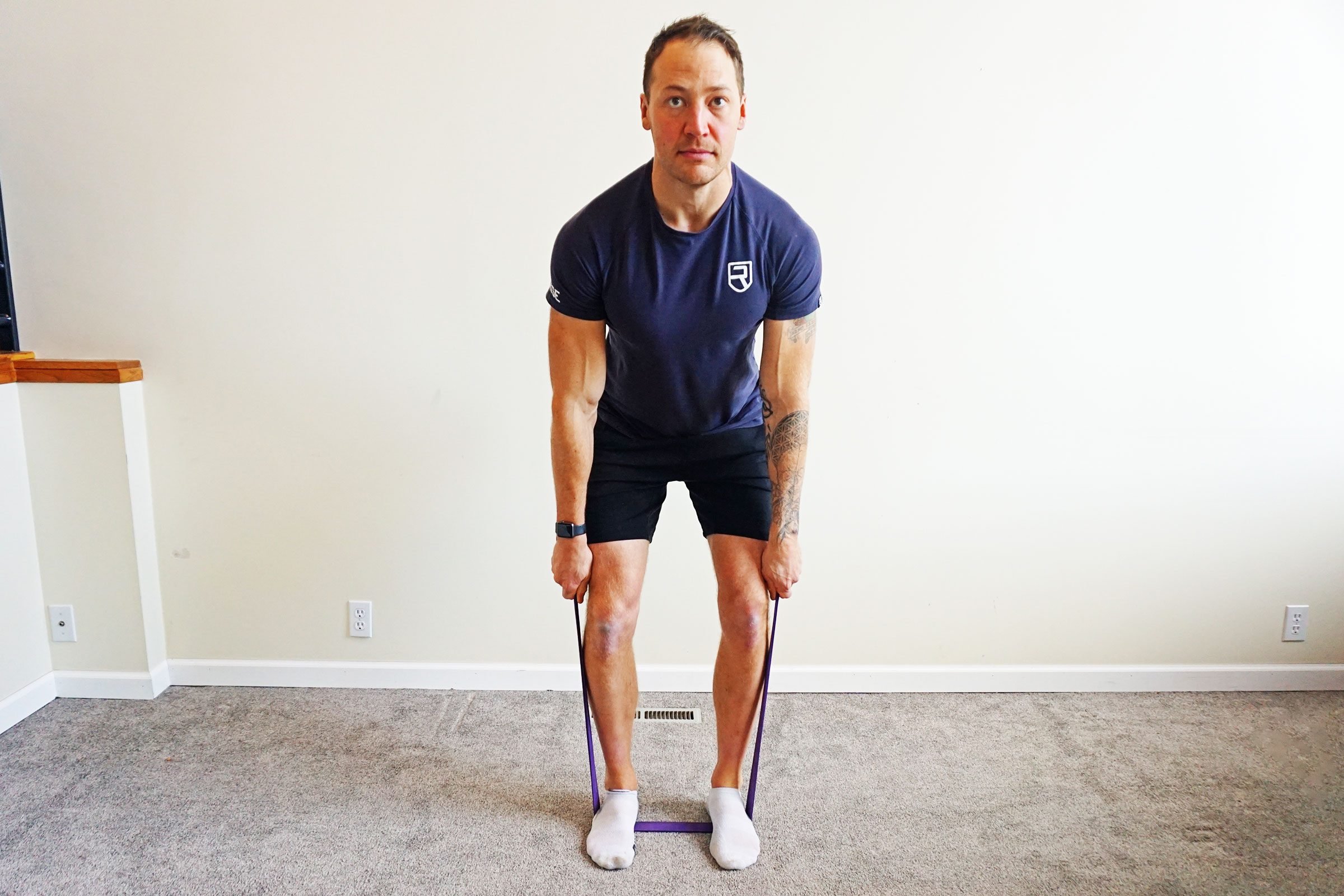
The benefit of using a band for deadlifts is that you have less resistance at the bottom of the movement where you’re at your weakest. The resistance increases as you stand up and reach a stronger position. This concept is called “progressive resistance. ” The movement matches your “natural strength curve”—weakest at the bottom of movement, while strongest at the top.
Start as you would in a traditional barbell deadlift. Take a wide enough stance so the band is nice and taut at the bottom. Drop your butt down, keep your chin up, and—this is critical—keep a straight back. (A curved back significantly increases your risk of injury.) Then stand straight up while pulling on the band.
Starting to feel it? Here are some recovery tips to ease sore muscles. (We’ve got you. You’re welcome.)
Leg Extension – 4 sets x 15 reps
Muscle Activation: Quads
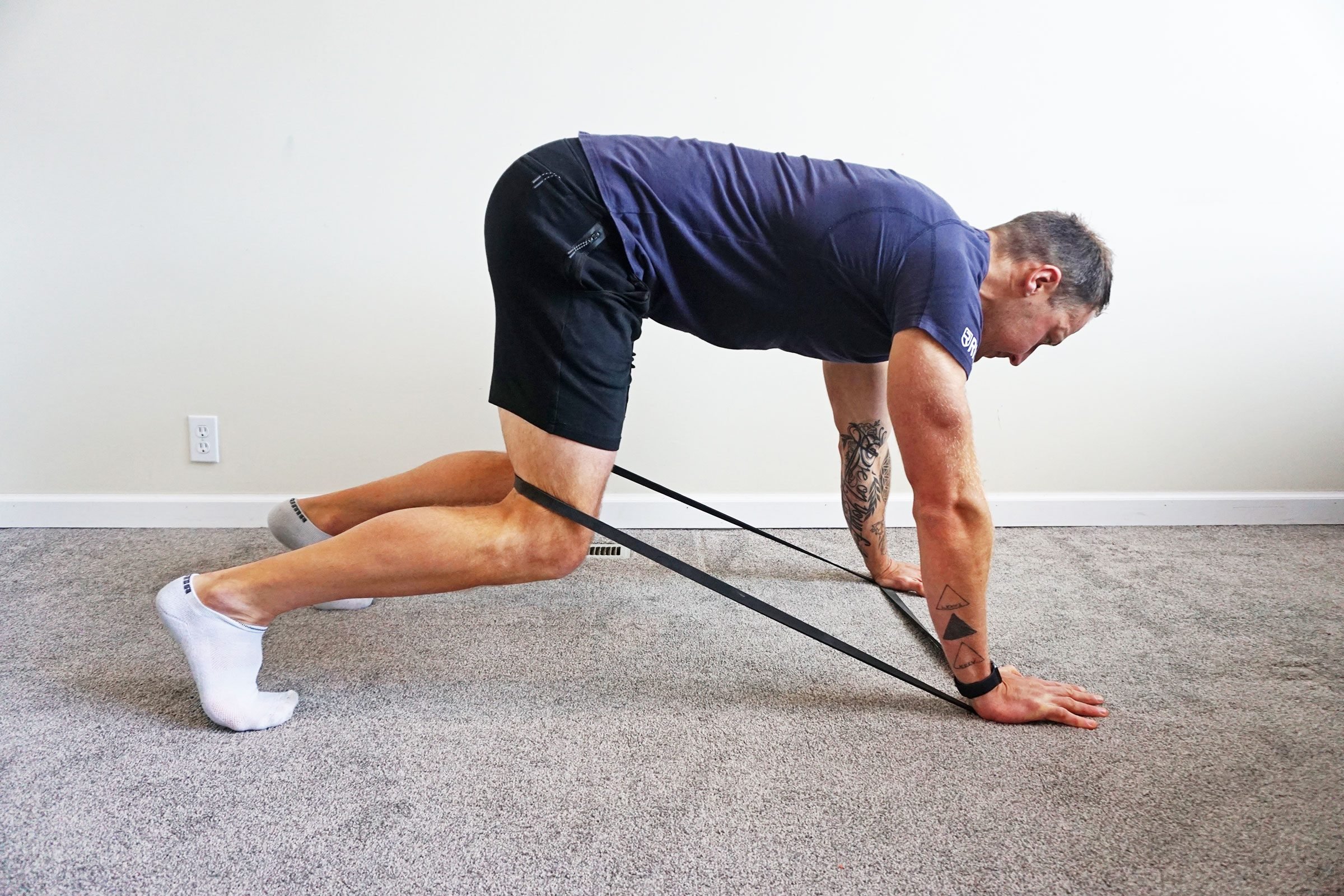
Compared to using leg extension machines in gyms, banded leg extensions are lifesavers for strengthening your quads if you suffer from knee pain.
Wrap the resistance band around the back of your legs and allow it to bend your knees forward. Drive your knees back against the resistance band to engage your quad muscles.
Try out these easy home exercises to help end knee pain.
Standing Calf Raise – 4 sets x 25 reps
Muscle Activation: Calves
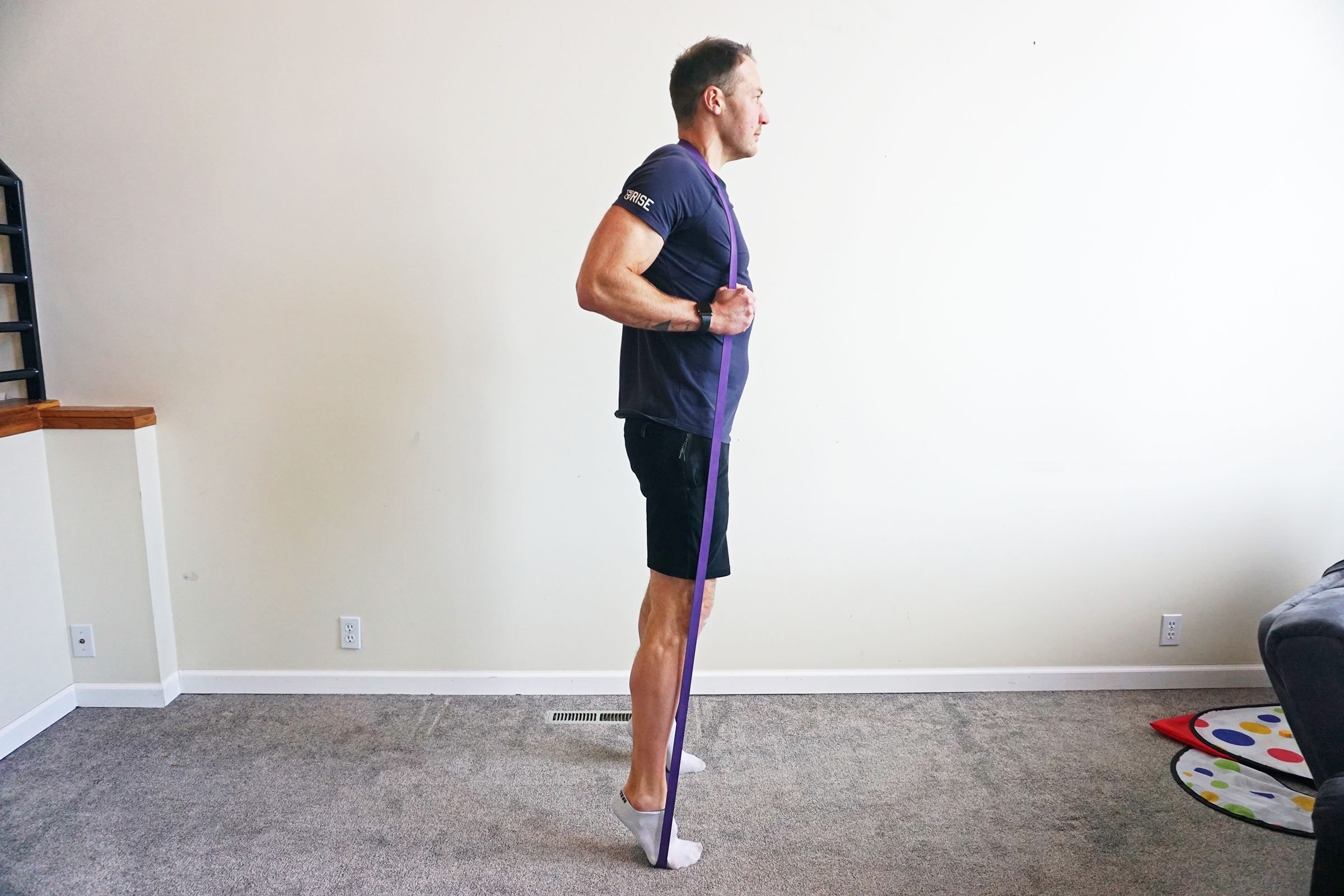
Calves are often a neglected muscle group. They’re usually tacked on at the end of a workout when you’ve expended all your energy on harder, more “important” exercises. But strengthened calves are a worthwhile pursuit. And you don’t need heavy weights to build well-balanced lower legs.
Holding one end of the resistance band in each hand, stand in the center of the band with your feet close together. Ensure the front of your foot is standing on the bands, which will allow you to raise your heels and engage your calf muscle while maintaining tension throughout the movement.
Pull the band up to shoulder level to create enough tension. Pause and hold tension at the top of the movement where there’s the most resistance. Squeeze hard to really feel a good burn.
If you love this, also check out our full-body resistance band workout to strengthen and sculpt.
For more informative ways to stay fit and healthy, sign up for The Healthy‘s daily newsletter. Also, keep reading:
- 12 Best Small Treadmills for Your Home or Apartment, Say Shoppers Who Bought Them
- A Trainer Says These Adjustable Dumbbells Are Your “Best Investment“
- The Top 8 Winter Beard Trends and Questions, From an East Coast Dermatologist
- Exhausted From Living Through Stressful Events? A Resilience Expert’s 6 Tips to Stay Encouraged















